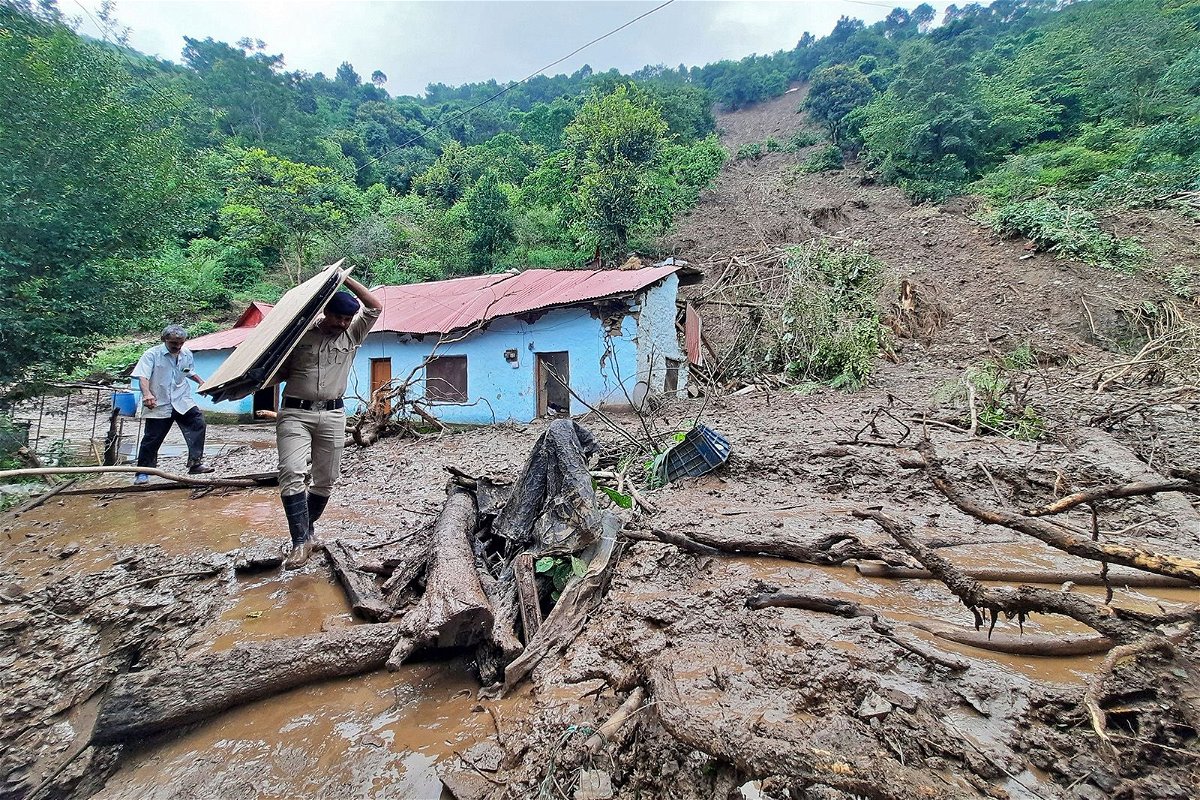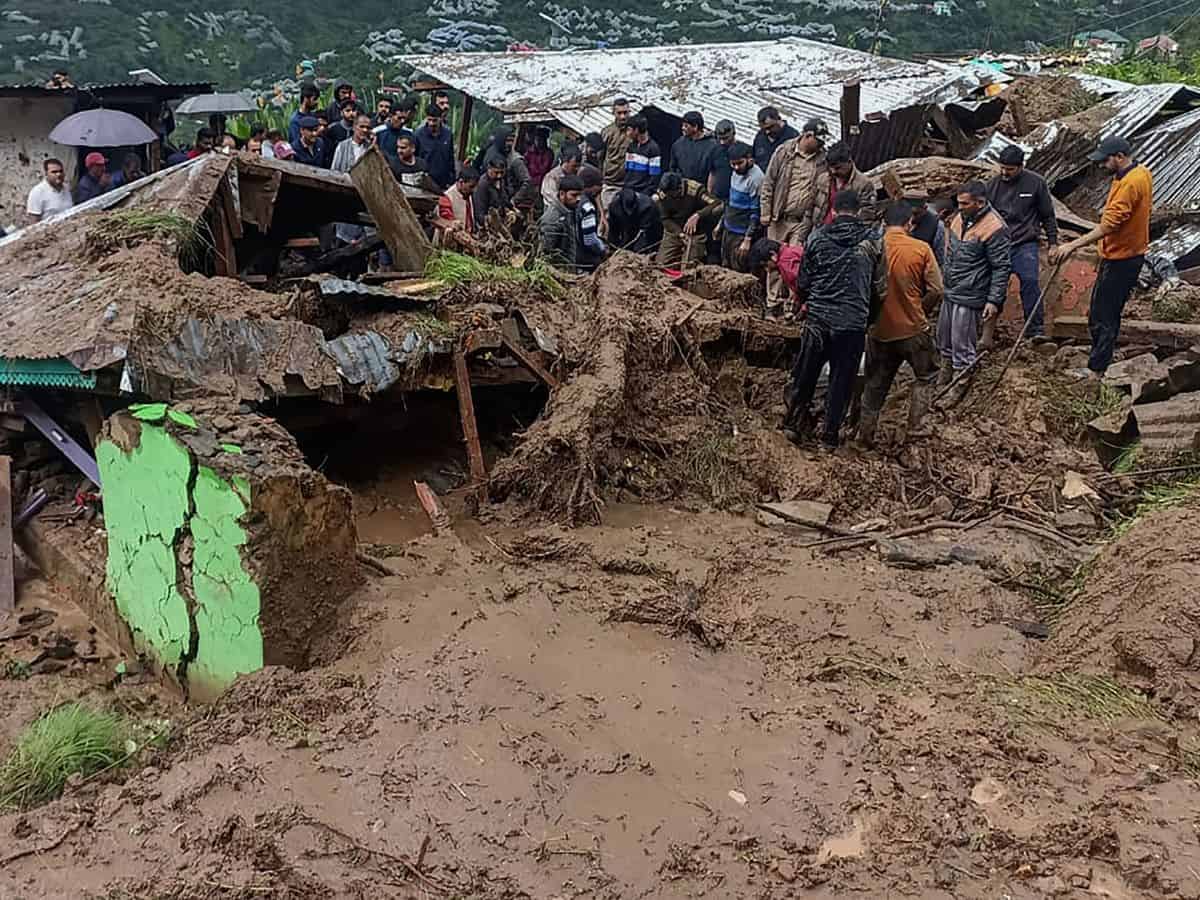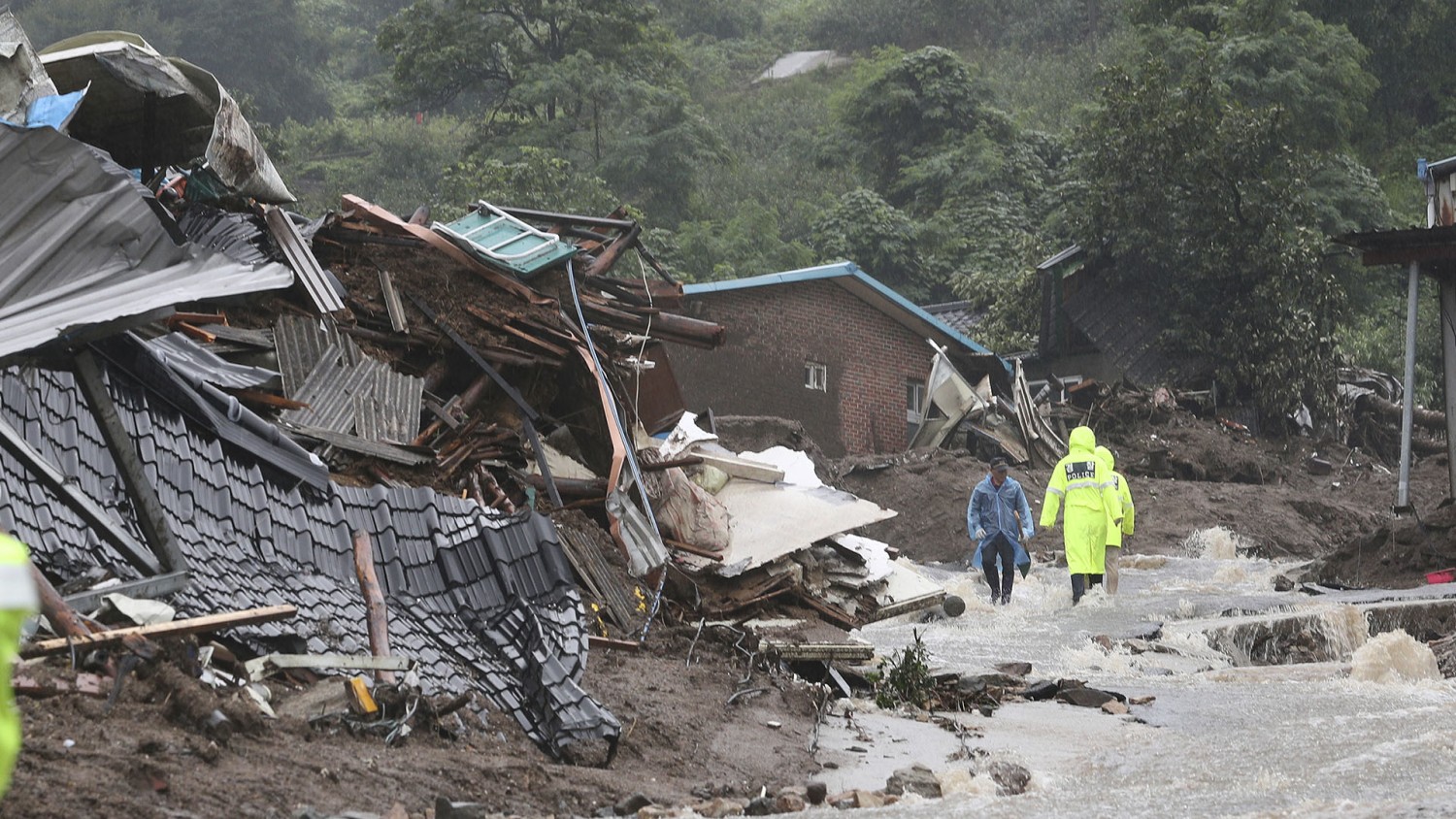Tragedy Strikes as Temple Collapse Claims more than 50 Lives Amidst Devastating Northern India Floods

Tragedy Strikes as Temple Collapse Claims more than 50 Lives Amidst Devastating Northern India Floods
In a heart-wrenching incident that unfolded amidst the relentless fury of heavy rains, a temple in the picturesque state capital of Shimla in northern India collapsed, leaving more than 50 people dead and several others trapped under the debris. The catastrophic event has cast a shadow over the region, where the combination of a revered temple’s ruin and the devastating flood aftermath has shaken the community to its core.
The region, known for its breathtaking landscapes and spiritual significance, witnessed a cruel twist of fate as the incessant downpour caused the collapse of a prominent temple that had stood for generations. The temple, a place of solace and worship for both locals and tourists, was reduced to a heap of rubble within moments, turning an atmosphere of devotion into one of despair.
The incident occurred as torrential rains relentlessly pounded Shimla, triggering widespread flooding that disrupted normal life. The region, usually characterized by its serene beauty, transformed into a battlefield against the forces of nature. Rivers and streams swelled beyond their banks, roads were submerged, and communication networks faltered, leaving the population in a state of vulnerability.

As the temple crumbled under the pressure of the elements, a pall of grief and panic enveloped the area. Rescue operations were launched swiftly by local authorities, with teams of firefighters, police, and volunteers working tirelessly to extricate those trapped under the debris. The power of community solidarity shone through as ordinary citizens joined hands with officials to save lives, showcasing the resilience of the human spirit in the face of adversity.
In the midst of the disaster, stories of both heroism and tragedy emerged. Families anxiously waited for news of their loved ones, clinging to a glimmer of hope that their prayers would be answered. Rescuers braved treacherous conditions, battling through mud and rubble, their determination fueled by the urgency of their mission.
“We heard cries for help from beneath the rubble. It was a race against time as we carefully removed debris to reach those who were trapped,” shared one of the firefighters involved in the operation. His words underscored the emotional toll that such rescue efforts can take on those on the frontlines.

The devastating incident underscores the urgent need for robust disaster preparedness and response mechanisms in vulnerable areas. Climate change has amplified the frequency and intensity of extreme weather events, leaving communities ill-equipped to cope with the havoc they unleash. As scientists and policymakers continue to grapple with finding long-term solutions, it is the immediate actions of local communities and authorities that can make a critical difference.
Government agencies, non-governmental organizations, and volunteers rallied together, providing shelter, food, and medical assistance to the affected population. The collective response, despite the enormity of the challenge, serves as a reminder that unity can triumph over despair. Local schools were turned into makeshift shelters, offering a safe haven to those who had lost their homes to the floodwaters.
As the rescue operations continued, heart-wrenching tales of survival and loss emerged. Families were reunited with their loved ones who had been miraculously rescued from the jaws of death. However, amid the relief, there were stories of those who did not make it out in time, leaving behind grieving families and shattered communities.
The incident has also ignited a broader conversation about the need for responsible urban development and adherence to safety regulations. The temple collapse underscores the importance of ensuring that structures are built to withstand the challenges posed by natural disasters. Stricter enforcement of building codes, especially in areas prone to flooding or earthquakes, can prevent future tragedies of this nature.

As the affected region begins the arduous process of recovery and rebuilding, there is a palpable sense of resilience and determination in the air. The temple collapse has not only exposed the vulnerabilities of the region but has also brought to the forefront the strength of its people. The community’s ability to come together in the face of adversity is a testament to the power of human compassion and solidarity.
As the floodwaters recede and the debris is cleared, the temple’s collapse will forever remain etched in the collective memory of the region. It serves as a somber reminder of the unpredictability of life and the need to cherish every moment. The lives lost in this tragic event are a stark representation of the cost of nature’s wrath, but they will also serve as a rallying cry for change and preparedness.
In the aftermath of this catastrophe, as the people of Shimla and the surrounding areas pick up the pieces of their lives, there is a collective determination to rebuild not only the physical structures that were lost but also the spirit of the community. The temple’s collapse will be a turning point, a poignant reminder that amidst the chaos of life, the strength of human bonds and the will to endure can shine through, even in the darkest of times.




